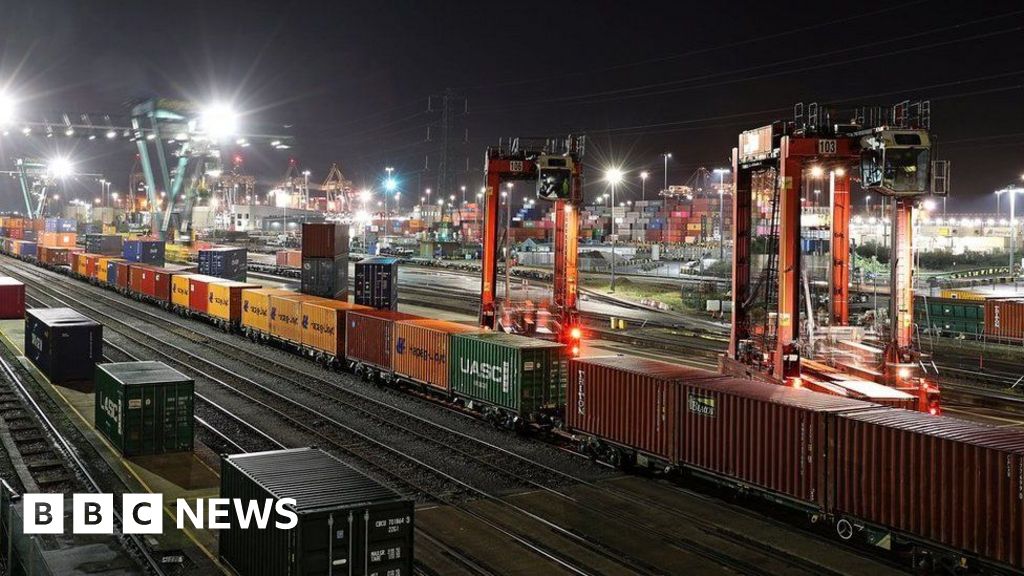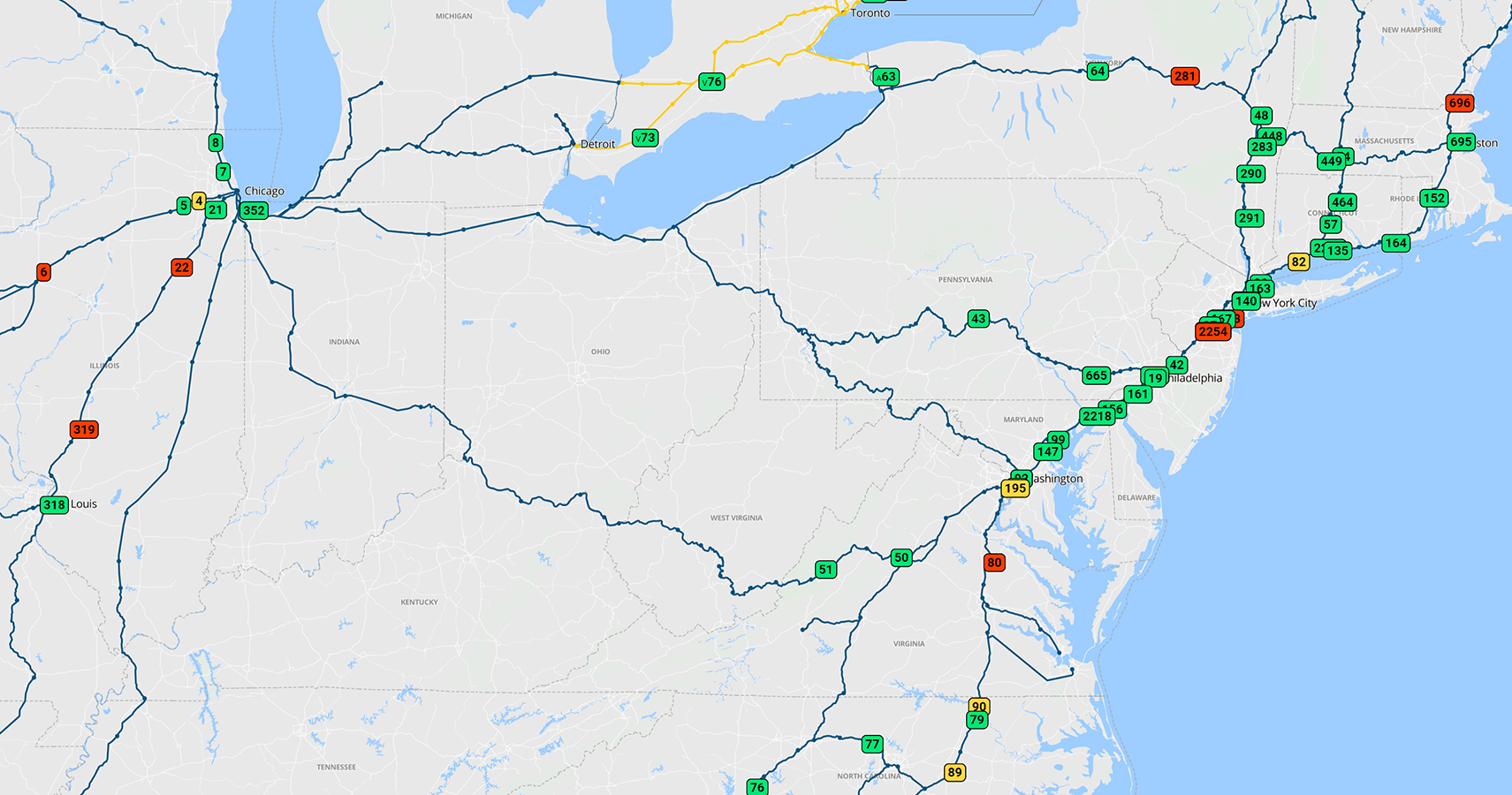micheal_can
Senior Member
The length thing is certainly a valid observation, but I’m not sure that Europe can or should imitate the North American model of extra long trains. Making them longer than passenger trains, sure, but the optimal length may be much shorter than in this country.
The European system has the advantage of having a highly capitalised, high speed high frequency track infrastructure which can accommodate a much greater number of routings and discrete movements. Whereas we have a much more limited network of rail lines that go fewer places and are built for a much lower number of movements per day/hour, with more directional constraints ie much more single track working. And speeds that are not highway competitive. And shipments of different volumes - trucking handles single container loads well, but not 15,000 tons of a bulk commodity. And a very limited number of transload points, ie large high volumes intermodal terminals such as BIT and VIT.
What North America needs is a whole new network that can match highways for speed while offering an infinite variety of routings and sizes of shipments. I can’t see the existing rail system being made compatible with this need.
Shipment distance is a big consideration. Look at Belgium - they have a critical need to shift (an ever growing volume of ) container traffic through their major ports away from highway, but even with really good rail infrastructure, the idea of putting containers on a train for the short "last mile" trip to the inland origins/destinations is not cost effective because the line haul revenue is short and the road network can offer direct delivery to more places much faster. The cost of investment in inland container terminals exceeds the cost of expanding roads.
North American railways have faced a similar challenge when trying to compete with trucks for NAFTA auto business - a huge number of trucks move between Ontario and the states carrying auto parts, but the plants are so distributed at both ends that there is no potential for a "main line" to connect them, especially with the Windsor/Detroit border crossing acting as a choke point in the middle. I-75 and 401 win the business.
My fantasy highway competitive distribution system looks much more like the people movers at airports, linked to distribution centers and many local transload hubs. Launch a shipment somewhere, and it travels in an automated manner, never being coupled to other shipments or shunted. In essence, dropping off a container looks a lot like mailing a letter that is delivered by public transit thru a SRT-like fixed guideway system.
In the GTA, such a fixed guideway system would logically begin by linking the major rail container yards with the large logistics hubs, replacing local drayage of containers. Next would be an extension to industrial towns and facilities and a connection to the USA that competes with I-75. There would be an infiinite number of drop off/pickup locations - much like the number of mailboxes and mail pickup boxes.
Fantasy perhaps - but it illustrates why highway has worked well on both sides of the Atlantic. We could simply automate and electrify trucking, but at some point the energy benefits of steel wheel on rail over rubber tire on ashphalt, plus the safery benefits of segregating trucking from small vehicle passenger transportation on fixed guideways, might be material. Someone with lots of money and an entrepreneurial spirit may eventually design a technology that fills this need. (Elon, are you out there?)
- Paul
The reason our freight trains are so long is we let them go that long. Part of it is the fact that so few passenger trains share those lines, they can run over siding trains without worrying about a passenger train getting in the way. The other thing is governments here will bend easier to the railways to allow them to do something if it is not going to get someone killed. Most regulations are based on the goal of preventing deaths.
The fact that EU trains are limited to siding length is why they can have a more robust passenger service. If the passenger train is going to run late for that freight, the freight will fit in the siding. It is a simple situation and a great solution. The problem is, it limits train length.
The solution there, and here is the same, if we want a robust passenger service - longer sidings/double track. If the regulation was that all trains, regardless of type must fit in every siding between terminals,then either the length of freight trains would need to be shorter, or the sidings would need to be longer. Double track can make that moot if it is set up with crossovers to allow virtually the same thing. With the lawsuit between Via and CN, we may see some changes in either train length, or siding length.
Overall, I feel that we should have even more fright go by rail. The amount of truck traffic on most major highways seems to have increased to such a point where it seems unsustainable. If you use a simple number of 40 trucks, to move them by the highway, you need 40 people. By rail, you need 2. With the number of trucking companies still crying for drivers, rail is the solution.
Can you share a chart that shows the same things for EU and Canada/NA? Then we can compare Macintosh to Gala.The chart I shared clearly states that, the "% based on tonne-kilometers." Your chart clearly states that the percentage of the "Share of Canada's Gross Domestic Product, 2021." Very much apples and oranges.






